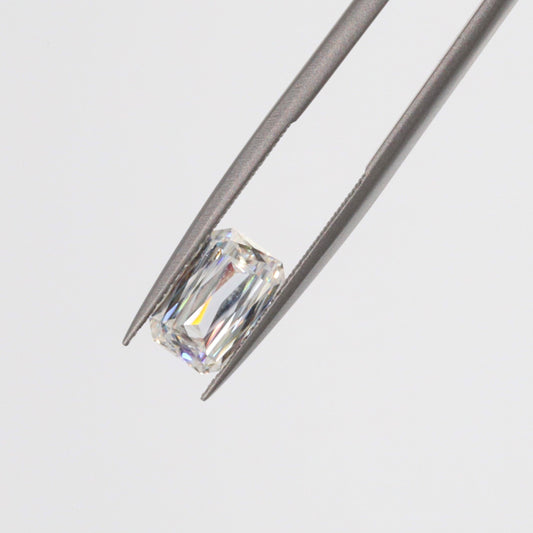When you think about an emerald, chances are you think of a rich, deep green hue. However, the traditional green emerald has a sister: a beautiful and unique gemstone from the same family, known as a yellow emerald. This stone is a sparkling, golden gem from the beryl family. This unique gemstone is also referred to as golden beryl or yellow beryl.
If you've never heard of this gemstone, you’re not alone. It’s one of the lesser known gemstones out there, but that doesn’t mean it’s any less stunning. If you’re looking to add a truly unique piece to your collection, we've prepared this helpful guide detailing everything from the yellow emerald’s history and why it makes such a stunning choice for jewelry.
The History of Yellow Emerald Gemstones
Yellow emerald gemstones, also known as heliodor, have a fascinating history that originated in the southwest African country of Namibia, bordering the South Atlantic Ocean. This golden gemstone was first discovered in 1913 before being inducted into the jewelry industry.
Heliodor is a particularly fitting name for this type of yellow beryl stone, as "helios" translates to “sun” in Greek and Helios was the Greek god of the sun. The second part of the name, "dor," comes from “doron,” meaning gift. Therefore, a heliodor gemstone is a gift from the sun. Fitting for a yellow emerald, right? Generally speaking, this golden beryl stone’s color ranges from a greenish yellow to bright yellow to yellowish-orange.
What is a Golden Beryl?
What is a golden beryl and what makes it so appealing for crafting beautiful golden beryl jewellery? The answer is made a bit more confusing by the term yellow emerald. In truth, this bright gemstone isn't an emerald at all, but rather a member of the beryl family to which the emerald (the traditional green stone we’re all familiar with) also belongs.
As its name implies, golden beryl has a yellow-toned, golden hue. It can vary in clarity from rich yellow, to yellow-green, to golden yellow. It’s sometimes confused with another popular yellow gemstone called topaz, but it differs in that it doesn’t share the same crystal formation as the slightly harder topaz.
Golden beryl has a hardness of 7.5 to 8 on the Mohs hardness scale. For reference, diamonds top the Mohs scale list at 10, with moissanites a close second at 9.25. This means the yellow emerald is a relatively durable gemstone. This durability makes it an excellent choice for jewelry that you can wear frequently, as you don’t need to worry about it getting easily scratched or damaged.
Yellow Beryl Sources
Where does the yellow emerald used to make jewelry, such as a yellow beryl ring, come from? One of the most common locations this gemstone is found is Brazil. The specimens of this gemstone from Brazil tend to have the highest clarity and are also generally larger than golden beryl from other sources.
As with other natural gemstones, this stone is mined from the earth. Other geographical sources include Namibia, where it was first discovered; as well as Ukraine, Russia, Madagascar, Zimbabwe, and Nigeria. It isn't a commonly known gemstone so it has less of a presence in mass-marketed jewelry. This helps it maintain a relatively lower price point due to the lower demand.
Yellow Emerald Value
Golden beryl value is moderately rare in comparison to other, more well-known beryls such as emeralds and aquamarines. Its value is also affected by its shade and color, as well as its size. For jewelry, this gemstone, like others, is assessed by looking at the four C’s: color, cut, clarity, and carat.
Carats are the weight of the gemstone, so this corresponds to its size. The cut determines the way it reflects light. Colored gemstones are generally less affected by cuts than clear ones such as diamonds, so in this case the most important factors are color and clarity.
All four factors combined are what determine the price of a yellow emerald gemstone for use in jewelry. For example, a 4-carat golden beryl ring with exceptional color and clarity will have a higher price than one with a less brilliant yellow and fewer carats.
Why Yellow Beryl Stones Make Great Jewelry
Given their relative hardness and resistance to scratching, as well as their warm and inviting color, yellow beryl gemstones are a wonderful choice for a variety of jewelry. They go well in earrings and rings, as well as pendant necklaces and bracelets. This gemstone is easy to cut and polish, and it has some of the richest hues among colored gemstones.




